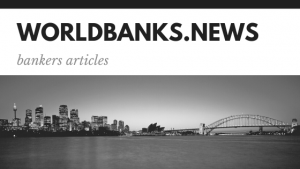CORE RISKS MANAGEMENT-MONEY LAUNDERINGS-FOREIGN EXCHANGE RISKS-SMEs
Bankers Of the Article
CORE RISKS MANAGEMENT-MONEY LAUNDERINGS-FOREIGN EXCHANGE RISKS-SMEs

worldbanks.news
6.0 CORE RISKS MANAGEMENT
Introduction: Risk is a part of human life. Banking is also a risk bearing industry. There are numerous risks in banking activities. Bankers have to achieve their objectives by managing these risks. Present banking industry expects that Bank’s equity holders will receive value along with profit of their shares; depositor’s money will remain safe and the organization, as a whole will confirm strength & transparency in all respect. To achieve this objectives Core Risks Management guidelines are the prime issue in the present-day banking activities. Identification, measurement and mitigation of risks and acquiring strength to cover these risks are the mandatory issues to be maintained in the banking organization. Sonali Bank Limited has already introduced risk management guidelines in accordance with Bangladesh Bank guidelines. As per Bangladesh Bank guidelines there are five core risks in Banking Sector These are:
-
- Credit Risks
- Asset and Liability / Balance Sheet Risks
- Internal Control & Compliance Risks
- Money Laundering Risks and
- Foreign Exchange Risks
Now a days Information Technology is also treated as one of the important area of risks in Banking. However risks in the banking system are discussed in brief under broad head of risk areas.
1) CREDIT RISKS:
Credit activities have developed a Risks Management system as follows:
- Policy Guidelines
- Organizational Structure & Responsibilities:
- Procedural guidelines
Early Alert System:
- Asset and Liability / Balance Sheet Risks:
Asset and liability management is the most important function of Bank management. Asset Liability Management ensure balanced fund mobilization and their deployment with respect to their maturity profile, cost, yield as well as risk exposure. ALM policy statement through ALCO paper Indicates as follows:
-
- Loan Deposit Ratio
- Whole – sale Borrowing Guidelines
- Commitments
- Medium Term Funding Ratio
- Maximum Cumulative Out- flow
- Liquidity Contingency Plan
- Loan Regulatory Compliance
ALM also discusses the following issues:
- i) Balance sheet Risk
- ii) Liquidity Risk
iii) Interest Rate Risk and
- iv) Capital Adequacy Risk
-
Internal Control & Compliance Risks
As part of ensuring internal control & compliance risk management Sonali Bank Limited have formed a high level MANAGEMENT COMMITTEE (MANCOM) headed by CEO & Managing Director. The Main functions of MANCOM are to:
-
- Assess / Identify Risks
- Measurement / evaluation of Risks
- Control function & duty allocation in all tiers
- Develop Management Information System (MIS)
- Supervision / Monitoring function & rectification of irregularities
- Functions of external auditors
- Compliance of regulations imposed by regulatory Authority, etc.
The MANCOM achieves its objectives through 3 separate units, namely:
- i) Compliance unit : ensures compliance of Banks rules & regulations.
- ii) Monitoring unit: Identification / evaluation of risks through MIS at each level
iii) Audit & Inspection Unit: Conducts Audit & Inspections at regular interval.
MONEY LAUNDERINGS :
It is the process by which proceeds from a criminal activity are dis-guised to conceal their illicit origins. Basically, money laundering involves the proceeds of criminally derived property rather than the property itself. Money launderers send illicit funds through legal channels in order to conceal their criminal origins. Money laundering prevention Act-2012 has defined Money Laundering as: “money laundering” means –
(i) knowingly moving, converting, or transferring proceeds of crime or property involved in an offence for the following purposes:-
(1) concealing or disguising the illicit nature, source, location, ownership or control of the proceeds of crime; or
(2) assisting any person involved in the commission of the predicate offence to evade the legal consequences of such offence;
(ii) smuggling money or property earned through legal or illegal means to a foreign country;
(iii) knowingly transferring or remitting the proceeds of crime to a foreign country or remitting or bringing them into Bangladesh from a foreign country with the intention of hiding or disguising its illegal source; or
(iv) concluding or attempting to conclude financial transactions in such a manner so as to reporting requirement under this Act may be avoided;
(v) converting or moving or transferring property with the intention to instigate or assist for committing a predicate offence;
(vi) acquiring, possessing or using any property, knowing that such property is the proceeds of a predicate offence;
(vii) performing such activities so as to the illegal source of the proceeds of crime may be concealed or disguised;
(viii) participating in, associating with, conspiring, attempting, abetting, instigate or counsel to commit any offences mentioned above; Laundering is not a single act but a process accomplished in 3 basic stages, which may comprise numerous transactions, by the launderers that could alert a financial institution to criminal activity- Placement- the physical disposal of the initial proceeds derived from illegal activity. Layering- separating illicit proceeds from their source by creating complex layers of financial transactions designed to disguise the audit trail and provide anonymity. Integration- the provision of apparent legitimacy to wealth derived criminally. If the layering process has succeeded, integration schemes place the laundered proceeds back into the economy in such a way that they re-enter the financial system appearing as normal business funds. The three basic steps may occur as separate and distinct phases. They may also occur simultaneously or, more commonly, may overlap.
The Money Laundering Prevention activity in banking includes:
- Obtaining of KYC, TP forms & maintenance
- Record keeping
- Reporting -STR, CTR, Quarterly report etc.
- Staff training regarding AML activities
- Communication with regulatory Authority
- Compliance of AML guidelines by bank authority
- Bank BOD Commitment towards AML guidelines.
FOREIGN EXCHANGE RISKS:
The globalization process has made the foreign exchange market a worldwide network. The market is open around the clock and follows the sun around the globe with the help of communication satellites. There is none statutory international body that regulates the activities of foreign exchange market. Therefore, it has been emerged as a self-regulated market, regulated by ‘The Model Code’ developed by Association Cambistle Internationale – The Financial market Association (ACI – FMA). These are the professional association of global traders with the sole objective of the enhancement of the professionalism.
8.0 Small and medium enterprises (SMEs)
Small and medium enterprises (SMEs) or small and medium-sized businesses (SMBs) are companies whose personnel numbers fall below certain limits. The abbreviation “SME” is used in the European Union and by international organizations such as the World Bank, the United Nations and the World Trade Organization (WTO). Small enterprises outnumber large companies by a wide margin and also employ many more people. SMEs are also said to be responsible for driving innovation and competition in many economic sectors. Existing definition of SME is recommended by Better Business Forum and accepted as a uniform one by Ministry of Industry and Bangladesh Bank. Criteria of the definition of SME are given below:
Definition of Small Enterprise:
Small Enterprise refers to the firm/business which is not a public limited company and complies the following criteria:
GB Notes
9.0 Legal Tender
Legal tender is a medium of payment allowed by law or recognized by a legal system to be valid for meeting a financial obligation.
[1] Paper currency and coins are common forms of legal tender in many countries. The origin of the term “legal tender” is from Middle English tendren, French tendre (verb form), meaning to offer. The Latin root is tendere (to stretch out), and the sense of tender as an offer is related to the etymology of the English word extend (to hold outward).
[2] The noun form of a tender as an offering is a back-formation of the noun from the verb.[citation needed] Legal tender is variously defined in different jurisdictions. Formally, it is anything which when offered in payment extinguishes the debt. Thus, personal cheques, credit cards, debit cards, and similar non-cash methods of payment are not usually legal tender. The law does not relieve the debt obligation until payment is accepted. Coins and banknotes are usually defined as legal tender. Some jurisdictions may forbid or restrict payment made other than by legal tender. For example, such a law might outlaw the use of foreign coins and bank notes or require a license to perform financial transactions in a foreign currency. In some jurisdictions legal tender can be refused as payment if no debt exists prior to the time of payment (where the obligation to pay may arise at the same time as the offer of payment). For example vending machines and transport staff do not have to accept the largest denomination of banknote. Shopkeepers may reject large banknotes: this is covered by the legal concept known as invitation to treat. However, restaurants that do not collect payment until after a meal is served must accept that legal tender for the debt incurred in purchasing the meal. The right, in many jurisdictions, of a trader to refuse to do business with any person means a purchaser may not insist on making a purchase and so declaring a legal tender in law, as anything other than an offered payment for debts already incurred would not be effective.
10.0 Revolving credit
Revolving credit is a type of credit that does not have a fixed number of payments, in contrast to installment credit. Credit cards are an example of revolving credit used by consumers. Corporate revolving credit facilities are typically used to provide liquidity for a company’s day-to-day operations. They were first introduced by the Strawbridge and Clothier Department Store.
Typical characteristics
- Case study is required
- The borrower may use or withdraw funds up to a pre-approved credit limit.
- The amount of available credit decreases and increases as funds are borrowed and then repaid.
- The credit may be used repeatedly.
- The borrower makes payments based only on the amount they’ve actually used or withdrawn, plus interest.
- The borrower may repay over time (subject to any minimum payment requirement), or in full at any time.
- In some cases, the borrower is required to pay a fee to the lender for any money that is undrawn on the revolver; this is especially true of corporate bank loan revolving credit facilities.
A revolving loan facility provides a borrower with a maximum aggregate amount of capital, available over a specified period of time. However, unlike a term loan, the revolving loan facility allows the borrower to drawdown, repay and re-draw loans advanced to it of the available capital during the term of the facility. Each loan is borrowed for a set period of time, usually one, three or six months, after which time it is technically repayable. Repayment of a revolving loan is achieved either by scheduled reductions in the total amount of the facility over time, or by all outstanding loans being repaid on the date of termination. A revolving loan made to refinance another revolving loan which matures on the same date as the drawing of the second revolving loan is known as a “rollover loan”, if made in the same currency and drawn by the same borrower as the first revolving loan. The conditions to be satisfied for drawing a rollover loan are typically less onerous than for other loans.
A revolving loan facility is a particularly flexible financing tool as it may be drawn by a borrower by way of straightforward loans, but it is also possible to incorporate different types of financial accommodation within it – for example, it is possible to incorporate a letter of credit facility, swingline facility or overdraft facility within the terms of a revolving credit facility. This is often achieved by creating a sublimit within the overall revolving facility, allowing a certain amount of the lenders’ commitment to be drawn in the form of these different facilities.





















3 thoughts on “CORE RISKS MANAGEMENT-MONEY LAUNDERINGS-FOREIGN EXCHANGE RISKS-SMEs”
https://hot-film.com.ua/g94109475-skidka-teplyj-pol
https://teplapidloga.com.ua/g102359950-kabelnyj-elektricheskij-teplyj
запчасти для выдувного оборудования для производства